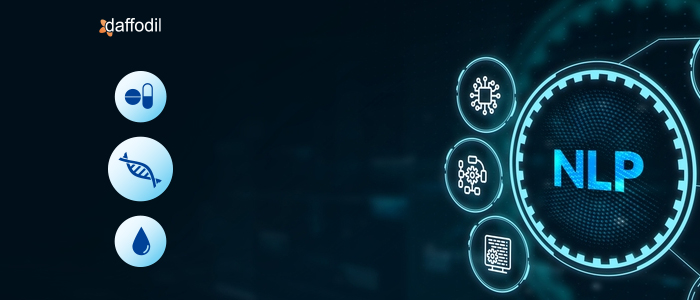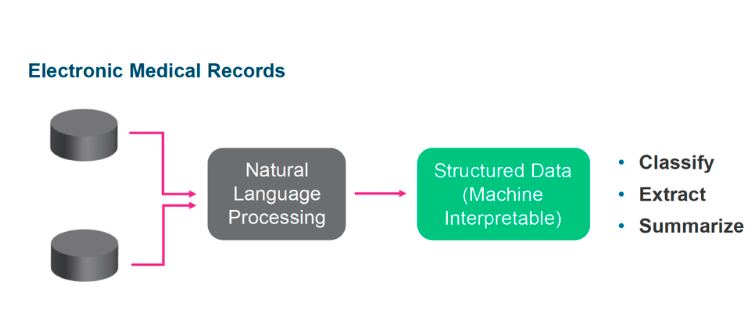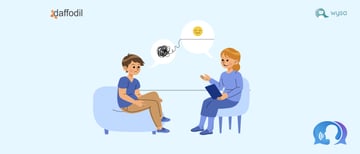
A majority of healthcare data today, about 80% of it, happens to be unstructured. Most sources used for aggregating Electronic Health Records (EHR) require a considerable amount of pre-processing because most of them are not machine-readable. Natural Language Processing (NLP) and various Machine Learning (ML) techniques can, however, unlock all the potential enmeshed in unstructured data.
Any type of data that is not stored in a pre-defined database or format tends to be unstructured. Data sources such as EHR adaptable text fields, diagnostic summaries, progress records, physician notes, demographic data, medical imaging, and so on are examples of the tons of unstructured data present in the healthcare domain.
In this article, we will explore the various ways that NLP can unlock the full potential of unstructured data that other analysis tools are often unable to do.
Why Is Healthcare Data Majorly Unstructured?
A majority of healthcare data is unstructured because medical imaging, diagnostics, EHR, and EMR data were never envisioned to be structured in the first place. Structured data is generated to fit into predefined table architectures, while healthcare data does not necessarily fit into any such template as it consists of mostly free-form fields.
Most other industries such as finance, hospitality, logistics, and so on consist of homogenous data that does not require much cross-referencing to decipher. On the other hand, medical images, X-Rays, patient data, prescriptions, and MRIs, when digitized, need to comply with authorizations and specific codes.
These aspects of healthcare software data make it not machine-readable and so most of it cannot be translated to a data table or a relational database. While EHR systems have been widely adopted over the last few decades, there is a prominent volume of data existing in paper-based formats such as fax. Additional technological support through means such as Optical Character Recognition (OCR) can help translate scanned records into machine-readable formats which can be utilized in analysis tools.
How Does NLP Improve Unstructured Data Analysis?
Analysis tools that work with NLP can help convert free-form textual data to more structured formats, so health systems can use it to categorize patients and use their health information for analysis and reporting.

There are essentially four areas where NLP can enhance the way unstructured data is captured and utilized:
1)Better EHR Data Usability
EHR usually arranges information about patients as and when patients arrive and data is stored on a first come first serve basis making categorization an arbitrary process. Using NLP tools, physicians are enabled with better search and reporting capabilities and information is easier to find as well. Drill-down data arrangement and the ability to mine data improve the outcomes that arise from EHR data. The EHR interface is automatically divided into logical sections by NLP so that no information is missed during diagnoses.
2)Predictive Analytics Capabilities
With NLP, unstructured data can be processed in an in-depth manner for ensuring better coverage of population health statistics. In the general epidemiology domain, statisticians and medical professionals can understand points in the spread of a disease where they can intervene and mitigate the risk. These points can be examined to enable better predictions for future pathogens so that timely action can be taken.
3)NLP-Driven Phenotyping
Phenotyping is a means of patient categorization used by physicians to classify them on the basis of observable and fairly conspicuous physical traits of the patients. Phenotypes can relate to the patients' appearance, biochemical makeup, symptoms, ongoing vitals, and so on. Structured data is most appropriate for phenotyping as it is more straightforward for extraction, reporting, and analysis. However, as most of the healthcare data happen to be unstructured, accurate NLP tools are necessary to extract this type of data. With a higher number of phenotypes, pathology tracking and reporting become more accurate giving actionable insights and drill-down information.
4)Enhancing Quality Of Health Systems
Large-scale all-encompassing health systems are run by nationwide entities such as governments and national medical associations. Existing pathologies that threaten population health are managed by certain infrastructures and mechanisms and to develop these further requires a lot of analysis. Through in-depth NLP-based reporting and analytics, physicians can monitor how their diagnoses and efforts are improving population health in real-time. When physicians on a national scale are enabled by NLP to monitor quantifiable outcomes and examine reports, entire health systems can be modified to be more efficient.
Customer Success Story: How Daffodil leveraged AI to integrate over 12 health tracking parameters for a Canadian healthcare app company.
Challenges Faced By NLP With Unstructured Healthcare Data
There are several NLP-based analysis tools that have already been developed and many are being researched and innovated upon. Yet there is still a large proportion of healthcare organizations that struggle with the digitization of healthcare data. The following key challenges are what hold back NLP from fully unlocking the potential of healthcare data:
- Overwhelming Data Diversity: As there are multitudes of source systems for healthcare data, there is unlimited variation in the kinds of languages that this data exists in. There is additionally great nuance in the intent, contextuality, and vocabularies of healthcare data that NLP systems are often not specifically developed for. The technicalities and unique jargon of specialized healthcare information can also be missed during the NLP-based processing of this data.
- Rigid Data Architectures: As textual patient data tends to be straightforward and technical it can be understood only by qualified medical professionals. Merging this data with medical imaging, X-Rays and other forms of unstructured data is what makes it decipherable to all other stakeholders of the healthcare processing information chain. However, this combined data tends to be even more rigid and unstructured making the construction of data tables to support this data that much more expensive and complicated.
- Siloed Analytics Capabilities: A skewed proportion of healthcare organization data exists on data warehouses and business intelligence platforms. These data storage technologies have a tendency to be notoriously siloed, making the merging of structured and unstructured data a struggle. While NLP can be utilized for the analysis of this data, the isolation of the constituent data points makes it challenging to collate the healthcare information into structured data tables.
ALSO READ: 10 Interesting Applications of Natural Language Processing (NLP)
NLP Structuring Can Optimize Healthcare Data
Structuring of healthcare data with NLP into flexible data architectures is helping healthcare organizations and nationwide healthcare systems in providing timely information to both patients and care providers and in deciphering an enormous amount of digital data. These systems make the processing and maintenance of large volumes of sensitive medical information seamless while helping manage access control. If your healthcare setup needs robust digital solutions to enhance care delivery, you can utilize Daffodil's expertise in this area by booking a free consultation with us.



